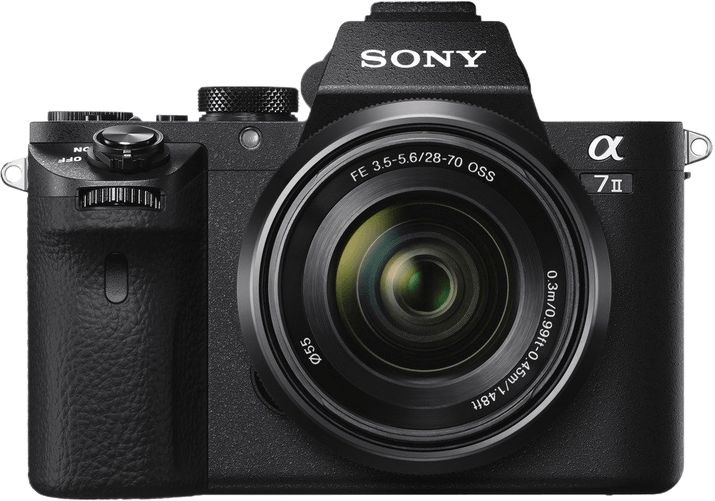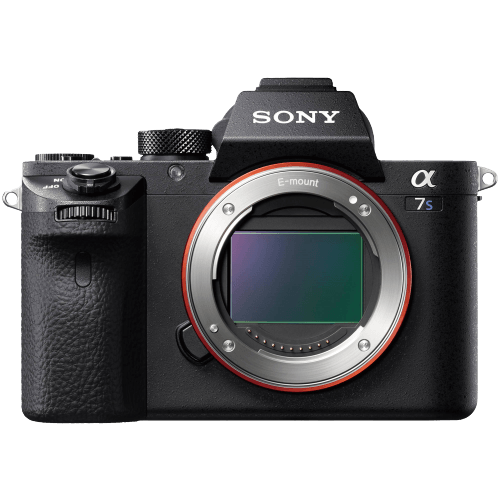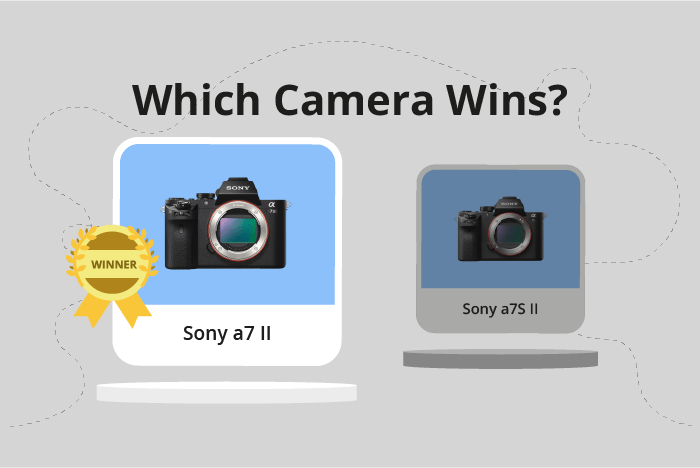Sony a7 II vs a7S II Comparison
Sony a7 II

Sony a7S II

The Sony a7 II emerges as the winner with a score of 69/100, while the Sony a7S II trails behind at 60/100. Both cameras are mirrorless and share the same dimensions of 127 x 96 x 60mm. They were released close to each other, with the a7 II launching in 2014 and the a7S II in 2015.
The Sony a7 II has an advantage in terms of price and weight. It was launched at $1600, and weighs 599g (1.32lbs), making it more affordable and lighter than the a7S II, which was introduced at $3000 and weighs 627g (1.38lbs).
The Sony a7S II, despite its lower score, might appeal to some users due to its more recent release date. This could indicate potential improvements or additional features not present in the a7 II.
Taking these points into consideration, the Sony a7 II is the better choice for those seeking a lighter and more affordable camera, while the a7S II could be suitable for users looking for a more recent model.
Sony a7 II vs a7S II Overview and Optics
The Sony a7 II outperforms the Sony a7S II in optics with a score of 78/100 compared to 66/100. Both cameras share several specifications, including a shooting speed of 5 frames per second, a CMOS sensor, a Bionz X processor, full frame sensor size, Sony lens mounts, and image stabilization.
The Sony a7 II’s superiority in optics is primarily due to its higher megapixel count of 24.2 compared to the Sony a7S II’s 12.2. This difference allows the a7 II to capture more detailed images, making it more suitable for photography enthusiasts who prioritize image quality. Additionally, the a7 II has a higher DXOMARK score for its sensor at 90, compared to the a7S II’s score of 85. This further indicates that the a7 II has a better overall sensor performance, which contributes to its higher optics score.
However, the Sony a7S II has its advantages as well. With its lower megapixel count, the camera is more adept at handling low light situations and producing less noise in images. This makes the a7S II a better option for those who frequently shoot in low light or prioritize video recording, where higher megapixel counts are less critical.
Taking all of these factors into consideration, the Sony a7 II is the better choice for those who prioritize image quality and detail in their photography, thanks to its higher megapixel count and better overall sensor performance. On the other hand, the Sony a7S II is more suitable for low light shooters and videographers, as its lower megapixel sensor allows for better low light performance and less image noise.
Sony a7 II vs a7S II Video Performance
The Sony a7S II wins the video capabilities comparison with a score of 86/100, while the Sony a7 II scores 56/100. Both cameras share some common video specifications, such as lacking built-in time-lapse functionality.
The Sony a7S II outperforms the a7 II in terms of video resolution and dimensions. It offers 4K video resolution (3840 x 2160) compared to the a7 II’s Full HD (1920 x 1080). This means that the a7S II delivers a significantly higher level of detail and clarity in video recording, making it ideal for professional use and high-quality content creation.
On the other hand, the Sony a7 II has a higher maximum video frame rate at 60fps, compared to the a7S II’s 30fps. This allows the a7 II to capture smoother video footage, especially when recording fast-moving subjects or action scenes. However, this advantage comes at the cost of lower video resolution and dimensions.
In terms of video performance, the Sony a7S II is the clear winner due to its superior video resolution and dimensions, making it a better choice for professional videographers and content creators. The Sony a7 II, with its higher frame rate, may be suitable for those who prioritize smooth video footage over resolution, but its overall video capabilities are less impressive than the a7S II.
Thus, the Sony a7S II is the better option for users who demand high-quality video performance, while the Sony a7 II might be more suitable for casual users or those who prioritize smoothness in their video recordings.
Sony a7 II vs a7S II Features and Benefits
The comparison between the Sony a7 II and the Sony a7S II reveals a tie in feature scores, with both cameras scoring 57/100. Despite the identical scores, there are some differences and advantages for each camera.
Both cameras share several specifications, including a 3-inch screen size, flip screen, and lack of touchscreen functionality. Additionally, neither camera has GPS, but both offer WIFI connectivity. Bluetooth, however, is absent in both models.
The Sony a7 II holds a slight advantage in screen resolution, boasting 1,230,000 dots compared to the a7S II’s 1,228,800 dots. This minor difference in resolution could result in marginally clearer image previews and menu navigation.
On the other hand, the Sony a7S II is known for its superior low-light performance and higher video recording capabilities, making it a better choice for videographers and photographers working in challenging lighting conditions. While these aspects are not directly reflected in the feature score, they contribute to the overall quality of the camera.
Taking these factors into account, it is evident that the Sony a7 II’s slightly higher screen resolution is a minor advantage, while the a7S II’s superior low-light performance and video capabilities offer more significant benefits. The choice between the two cameras depends on the user’s specific needs and preferences. If low-light performance and video capabilities are a priority, the Sony a7S II is the better option. However, for those who value screen resolution and are less concerned with low-light capabilities, the Sony a7 II may be the more suitable choice.
Sony a7 II vs a7S II Storage and Battery
The Sony a7 II outperforms the Sony a7S II in the same storage and battery category, but it’s a close call! Both cameras have one memory card slot and accept SD/SDHC/SDXC and Memory Stick Duo/Pro Duo/Pro-HG Duo cards. They also use the same NP-FW50 battery type. Only the a7 II offers USB charging.
The a7S II slightly outperforms the a7 II in battery life, providing 370 shots compared to the a7 II’s 350 shots. This difference may benefit those who require longer shooting sessions without changing batteries.
Since both cameras have similar specifications, neither camera stands out as a clear winner in this category. Users can expect similar storage and battery performance from both the Sony a7 II and the Sony a7S II.
Alternatives to the Sony a7 II and a7S II
Are you still undecided about which camera is right for you? Have a look at these popular comparisons that feature the Sony a7 II or the Sony a7S II:

